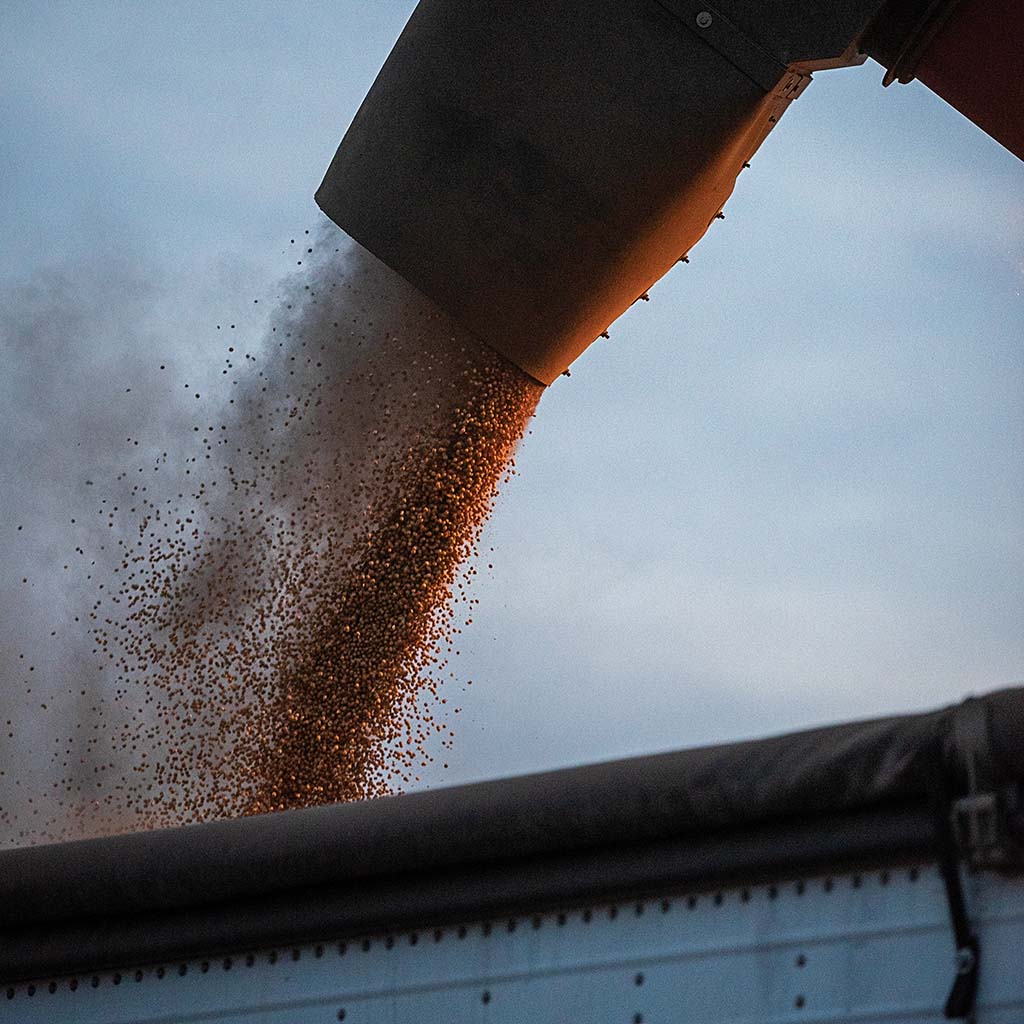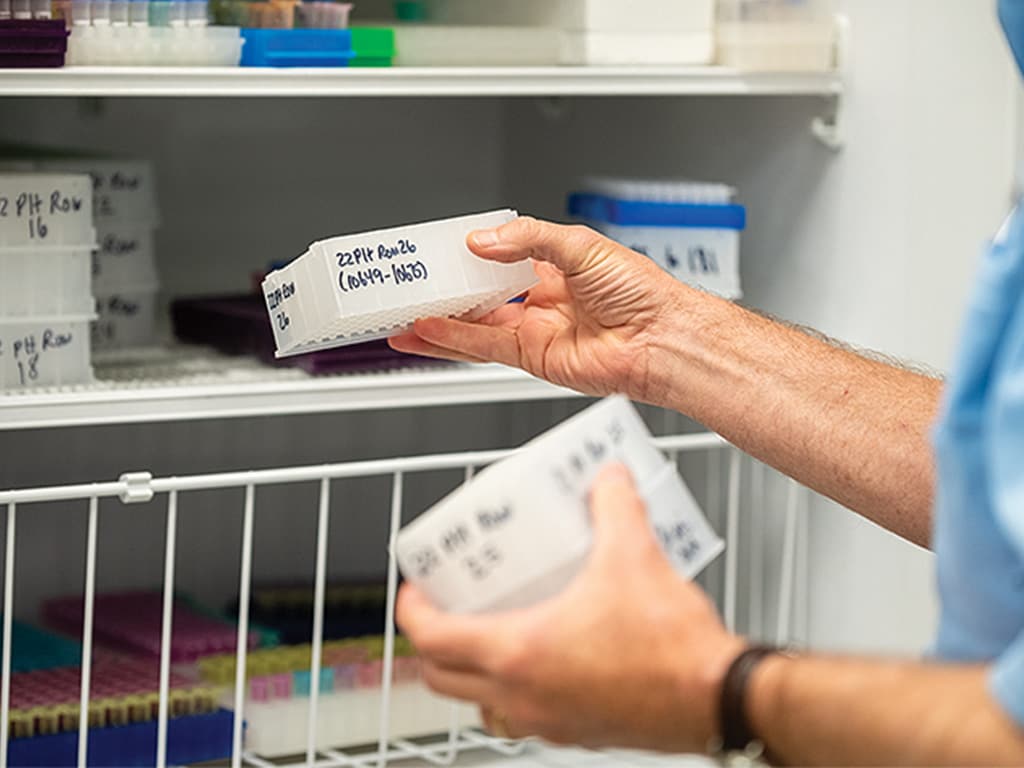Agriculture, Sustainability December 01, 2023
Quest for Protein
.
30 years of searching for the soybean protein gene.
"So much of life depends on serendipity. I was offered a position to research soybeans in graduate school and continued with soybeans when I did my Ph.D. because I found it interesting, but who knows, I could have become a hops breeder," reminisces Brian Diers, University of Illinois crop sciences professor emeritus.
The happy accident that landed Diers in an Iowa State University soybean lab in the 1980s has led to significant soybean breeding advancements, which help soybean farmers fulfill rising global protein demand.
After his curiosity was piqued developing early gene maps by comparing wild soybeans to commercial soybeans to earn his Ph.D., Diers set forth to find the genetic control of protein.
"It is an important trait because soybeans produce more protein on a productive acre than any other crop. If we could find the responsible genes and understand how they work, we could manipulate them to increase protein and not see as much yield loss," says Diers, illustrating the basis for his decades-long persistence.
Wild soybeans tend to have higher protein but lower yields, and as breeders have selected for higher yields through the years they have inadvertently selected against higher protein.
"Protein is costly for the plant to produce. You can't get something for nothing. As the plant photosynthesizes, it only has so much energy to produce protein, carbohydrates, and oil. It takes more energy to create protein," Diers explains.
After a couple decades of tedious mapping—slowly narrowing down thousands of gene intervals by making crosses, growing the plants to maturity, and analyzing the seeds' components—he was able to identify the small interval on the chromosome where the most important gene controlling protein is located.
That is when he started collaborating with Matt Hudson, University of Illinois crop sciences professor specializing in supercomputing and DNA sequencing.
"I started my career in bioinformatics trying to find out fundamental things about plants with the hope of making it easier and cleaner to grow food. I realized after a while what we were doing was quite a long way removed from that so eventually I came to Illinois to apply these new, high-performance computer analysis technologies to difficult scientific problems like what Brian was doing with soybeans."
They teamed up about 10 years ago, after Diers had already been researching the gene for about 20.
Above. Dr. Brian Diers has been making thousands of soybean crosses for three decades in search of the gene most responsible for controlling the seed's protein content. Matt Hudson, Ph.D., crop science professor at the University of Illinois has done much of the supercomputing to analyze Diers' data and locate the gene most responsible for protein content. (Photo courtesy of University of Illinois) Soybeans produce the most protein per productive acre of land than any other plant. Most of the meal is used for livestock feed and to make soy foods like soy milk, textured vegetable protein, and protein powder.
The long haul. "The problem in science is that if it's easy or quick to do, somebody probably has already done it. You have to have some stick-to-it-ness to answer the harder questions. Brian has immense drive and hasn't gotten bogged down in the very slow, painstaking process, in part, because he thinks the results are extremely important," says Hudson, paralleling his own passion for working on this project for years which has led him to help start the Center for Digital Agriculture on campus.
The team's dedication to reach a definitive answer and publish their findings finally last year was not only enabled by their positive dispositions but because of ongoing funding from the United Soybean Board (USB) and North Central Soybean Research Program.
"It's very important to have this decadal-scale funding, which has been provided by the soybean checkoff programs, in order to achieve these important outcomes," says Hudson. "Other grants expect you to complete a project in just a few years; this type of research takes much longer."
The gene they located—Glyma.20G85100—is most responsible for increasing protein content and can do so by 2%. That doesn't sound big, but when you multiply it by the 244 million metric tons of soybean meal consumed around the world in the 2021/2022 marketing year as reported by USDA FAS, that adds up to a lot more protein available for livestock feed and human consumption.
"USB's investments in genetic improvement help create greater resilience, and higher value traits continue to advance key food and industrial solutions in the marketplace," says USB representative Keenan McRoberts, Ph.D.
The researchers don't yet understand how the gene works but know it is related to the plant's circadian clock. Figuring that out so protein can be increased consistently without sacrificing yield is their next step. Many researchers are working on it across several universities.
Both Hudson and Diers say that soybean farmers can do something with this information as early as next planting season, though.
"If you have multiple soybean varieties that will fit your farm, you are better off selecting the one with higher protein. It will raise the overall value of your crop. You may not see the value immediately because it is diffused among everyone growing soybeans, but it's something to consider for the good of the industry," says Diers. ‡
Read More

SPECIALTY/NICHE, EDUCATION
Making Golf More Inclusive
Seth King is advocating for people with disabilities and changing the course of the game.

AGRICULTURE, EDUCATION
Golden Opportunity
The Gold Rush launched California's modern agriculture industry.






